Overview of surfing in East Bali
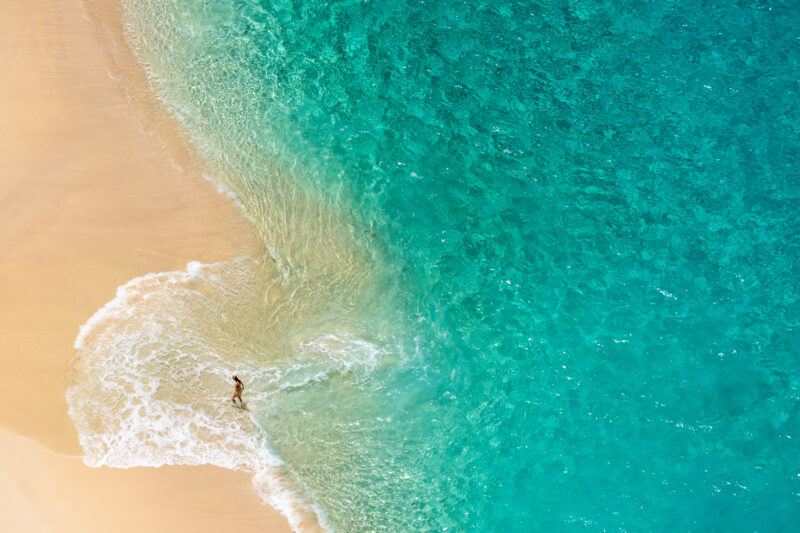
When surfers talk about Bali, the conversation almost always turns to the legendary Bukit Peninsula. Uluwatu, Padang Padang, Bingin, and Dreamland are etched into surf mythology as some of the heaviest and most consistent reef breaks in the world. But there’s another side to Bali’s surfing story—one that’s quieter, less crowded, and equally rewarding in its own way. Welcome to East Bali, where volcanic black-sand beaches meet the looming presence of Mount Agung, and where surf culture blends with traditional village life and lush, untamed landscapes.
Surfing in East Bali is very different to the Bukit or Canggu. The waves are generally softer, the towns slower-paced, and the lineups far less crowded. Instead of fighting for position against dozens of hungry shortboarders, you’ll often share a peak with a handful of locals or travelling surfers. This part of Bali is ideal for longboarders, beginners, and intermediates looking for fun, forgiving waves—though it still has heavy options like Keramas, one of Indonesia’s most powerful right-handers.
East Bali’s charm lies in its balance. You can surf in the morning, practice yoga by midday, explore temples in the afternoon, and dine in a local warung for just a few dollars in the evening. It’s not the factory line of barrels that West Bali delivers, but it’s a soulful surf destination perfect for travellers seeking a mix of waves, culture, and relaxation.
Surf Regions in East Bali
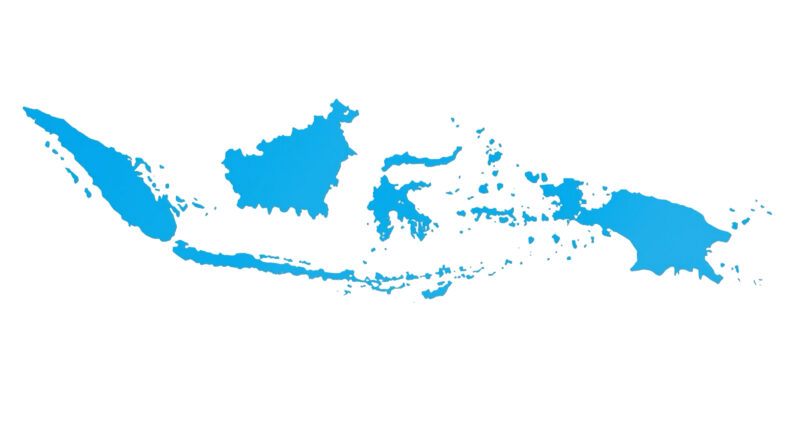
Keramas
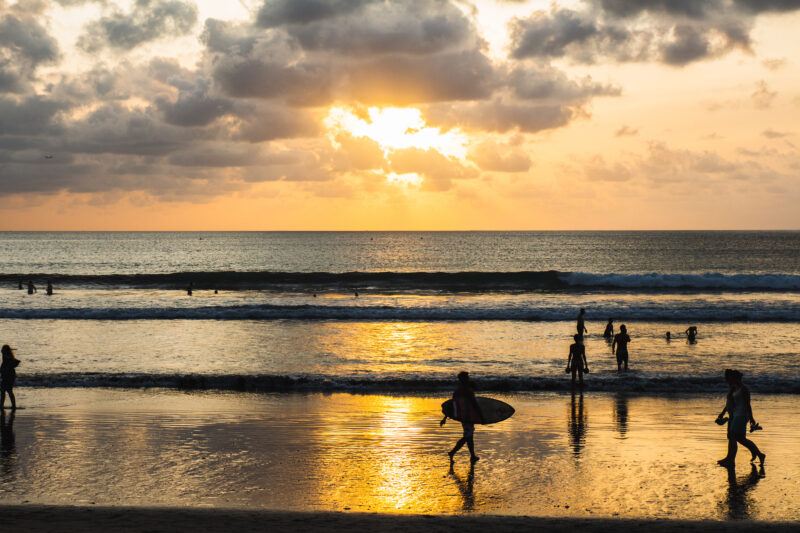
Keramas is the crown jewel of East Bali and one of the few surf spots on this coastline to gain international fame. It’s a heavy, world-class right-hand reef break that has hosted WSL events and attracted pro surfers from across the globe. At its best, Keramas delivers thick, hollow barrels and rippable walls—perfect for performance surfing. The wave breaks over a sharp reef, making it suitable only for experienced and confident surfers. Trade winds during the wet season help create the perfect wave conditions. When smaller, it’s accessible for intermediates, though it always demands respect. The black-sand backdrop and Mount Agung rising in the distance make it an iconic setting.
Padang Bai
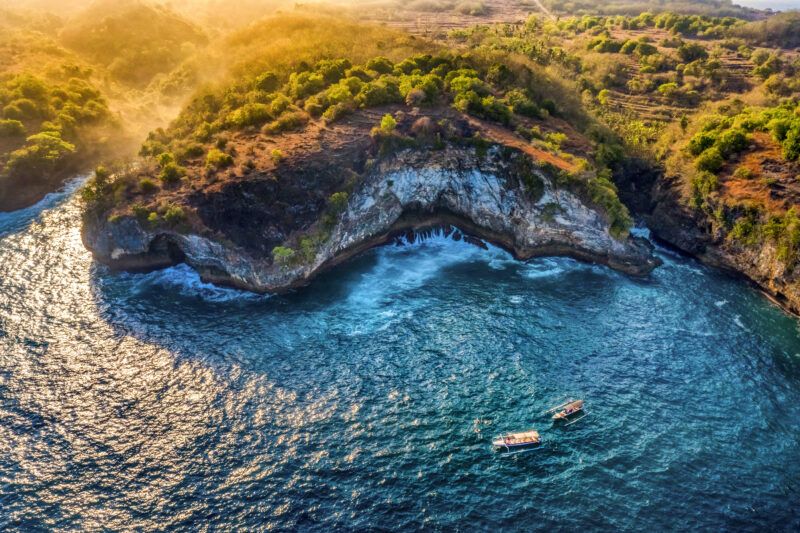
Padang Bai is better known as a diving town, but it has some hidden reef setups that come to life on the right swell. The waves are fun and playful, perfect for intermediates who want to mix scuba diving and snorkelling with surf sessions. Nearby, the Blue Lagoon is a beach break suitable for beginner and intermediate surfers, especially when other spots are too big. The Blue Lagoon is also a good option for novice surfers and those looking for a forgiving wave. It’s far from crowded and offers a peaceful alternative to busier areas.
Candidasa
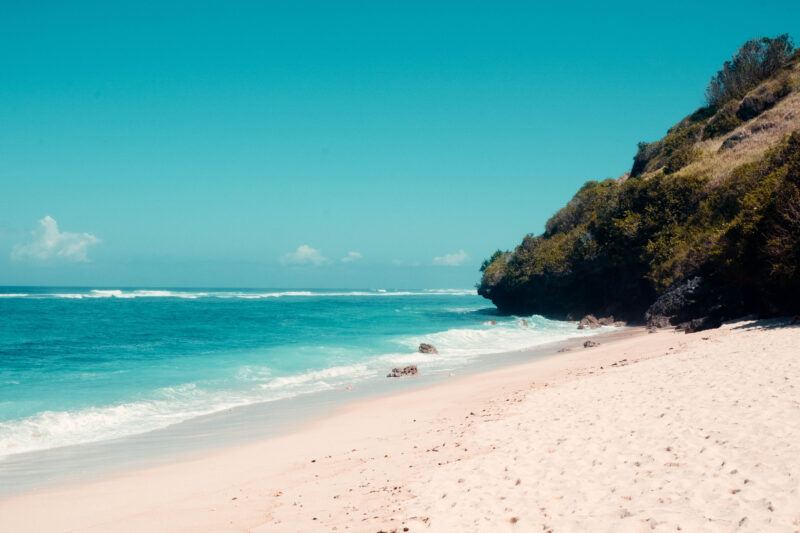
Candidasa was once Bali’s main tourist hub, and while much quieter now, its coastline still hides surf potential. Reef setups here can produce quality waves when solid swells hit. The spot comes alive during a big swell, producing some of the best waves in East Bali. The coastline features both sand beaches and sharp reefs, offering a variety of wave breaks for different skill levels. It’s inconsistent, but when it’s on, you’ll likely have the lineup to yourself. The town offers a mix of old-school resorts and boutique stays, giving it a laid-back, retro charm.
Jasri
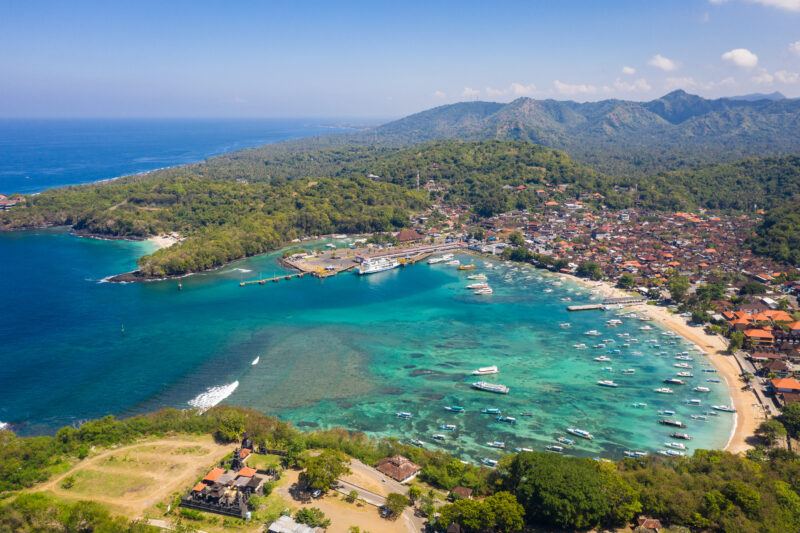
Jasri is one of East Bali’s most reliable surf spots, famous for its right-hand reef that peels down a cobblestone point. The wave is consistent, fun, and well-suited for longboarders and intermediates. It is ideal for intermediate surfers looking for long, cruisy rides. The surrounding area is pure East Bali: quiet villages, palm groves, and the ever-present silhouette of Mount Agung.
Nusa Lembongan and Nusa Penida
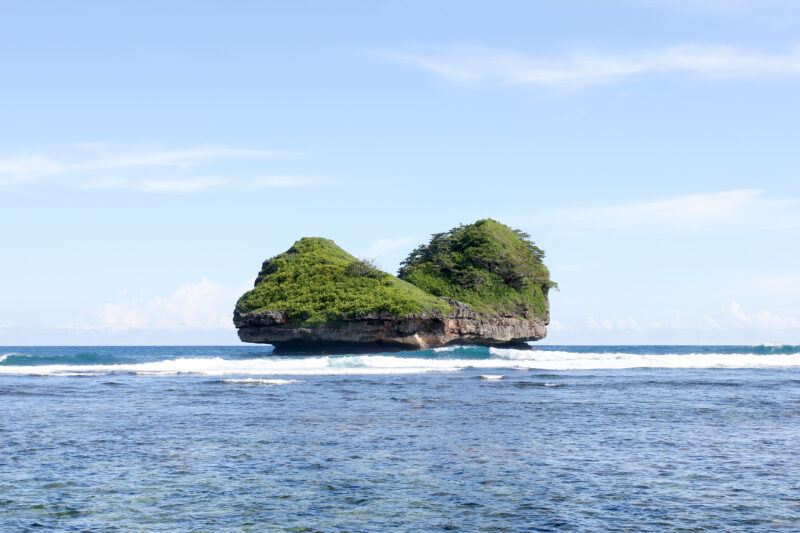
Just off East Bali’s coast lie the Nusa Islands, accessible by boat from Sanur or Padang Bai. Nusa Lembongan is home to breaks like Playgrounds, Lacerations, and Shipwrecks. Playgrounds is a user-friendly reef perfect for beginners and intermediates, and is best surfed at mid tide for optimal conditions. Playgrounds is also a great spot for beginner surfers due to its gentle wave breaks over sand beaches. Lacerations and Shipwrecks are best at low tide and can reach head high or bigger during solid swells. The water here is crystal-clear, the reefs alive with fish, and the vibe relaxed and tropical. Nusa Dua on the east coast is known for its consistent reef breaks and luxury resorts, making it a popular destination for surf camps and upscale travelers. A surf guide is recommended for those unfamiliar with the area to help find the best surf spot and ensure safety.
The Good
- Far less crowded than Bali’s west coast surf hubs
- Variety of waves: mellow rights at Jasri, playful reefs at Playgrounds, and world-class barrels at Keramas
- Affordable accommodation, food, and surf rentals compared to Seminyak or Uluwatu
- Stunning natural setting with Mount Agung, traditional villages, and the natural beauty of East Bali, including beautiful white sand beaches and white sand beaches that line the coast
- Plenty of cultural activities, yoga, and diving to combine with surf
The Bad
- Less consistent than the Bukit Peninsula or Canggu
- Many waves are reef breaks—knowledge of tides and currents is important
- Limited surf shops and schools compared to Bali’s west coast
- Long drives from Denpasar or southern Bali hotspots
- Keramas can get crowded with pros and photographers when it’s pumping

Getting there

Most surfers fly into Denpasar’s Ngurah Rai International Airport. From there, East Bali is a 1.5–2.5 hour drive depending on your destination. Keramas is the closest, just 45 minutes to an hour from Sanur. Jasri, Candidasa, and Padang Bai take longer—between two and three hours with traffic.
Scooters with board racks are the most popular option, costing around AU$10–15 per day. For longer distances, hiring a car and driver is common in Bali, usually AU$50–80 per day. If you’re heading to the Nusa Islands, boats run regularly from Sanur and Padang Bai, with round trips costing around AU$40.
Crowds in East Bali are nothing like West Bali. Jasri is often shared between just a handful of surfers. Padang Bai and Candidasa are even quieter, with days where you’ll surf completely alone. Keramas is the exception—it’s a world-class wave and often a crowded break, attracting both local and visiting surfers when the waves are pumping. When conditions line up, expect photographers in the channel and a competitive lineup.
Lineup Lowdown: Reef Breaks
Lineups in East Bali are generally mellow. Locals are welcoming and stoked to see respectful surfers visiting their breaks. At Keramas, things tighten up—local surfers and experienced surfers dominate the peak, making respect and awareness of lineup etiquette especially important. Locals and pros compete for set waves, and etiquette is crucial. Don’t paddle straight to the peak, respect priority, and watch before paddling out. At more laid-back spots like Jasri or Playgrounds, the vibe is easygoing and friendly.
Surf seasons and when to go
The best time of the year to surf in East Bali
Surf Seasons and When to Go
East Bali comes alive during the wet season, November to March, when offshore winds create clean, glassy mornings. The rainy season is the prime time for surfing Bali’s east coast, as consistent offshore wind provides excellent wave quality and fewer crowds at key surf spots. This is the opposite of the Bukit and Canggu, which usually blow out during these months.
The dry season, April to October, still brings waves, but afternoon onshore winds are common. Mornings are usually best. For consistency, November to March is the prime window.
Water Temperatures, Weather, and Wet Season
East Bali enjoys tropical water temperatures year-round, between 26–29°C. Boardshorts and bikinis are perfect, with rash vests recommended for sun protection. Air temps hover around 28–32°C daily, with high humidity. Wet season means frequent but short tropical showers, often clearing to sunshine within hours.
Can’t-Miss Surf Spots
Keramas
Keramas is East Bali’s crown jewel and one of the few east coast waves with true international recognition. The main wave here is a consistent wave that attracts expert surfers during the biggest swells, and the surf break is considered one of the best on the east coast. It is a right-hand reef break that can deliver everything from thick, hollow barrels to long, performance-friendly walls. Advanced surfers love it for its power and challenge, but intermediates can also score when the swell is smaller and friendlier. Best surfed on mid to high tide, with offshore winds in the morning, Keramas is at its finest between November and March. The wave can be crowded with locals and visiting pros, and photographers often line the channel to capture the action. The beach is lined with surf resorts and villas, offering direct paddle-out access and a growing surf community vibe.
Jasri
Jasri is one of the most consistent spots in East Bali and a perfect place for longboarders and intermediates. It is a very consistent wave and a great surf spot for intermediate level surfers. The wave peels gently along a cobblestone reef, creating long, cruisy rides that suit noserides and smooth carves. It rarely gets too heavy, making it accessible for a wide range of surfers. The setting is tranquil, framed by palm trees and the dramatic outline of Mount Agung. Jasri has a few surf schools and eco-lodges, and the local community is welcoming, giving it a low-key charm compared to Bali’s west coast.
Padang Bai
Padang Bai is primarily known as a diving destination, but on the right swell direction, reef setups appear that offer playful lefts and rights. The area features black sand beaches and coral reefs, and the volcanic rock shelf influences the wave quality. These waves are less consistent, but that also means you’ll often have them to yourself. They suit intermediates who are comfortable with reef breaks but want something mellow. Padang Bai is ideal for travellers who want to mix diving and snorkelling with occasional surf sessions, offering a slower, more cultural vibe.
Candidasa
Candidasa delivers quality reef waves during bigger swells, producing fast, rippable walls. The town itself is quieter than Bali’s southern hubs, and the surf is often completely empty. Consistency is lower here, but the rewards are high for adventurous surfers who don’t mind hunting for the right conditions. The vibe is retro, with a mix of old-school resorts, boutique hotels, and a backdrop of Balinese temples and mountain views.
Playgrounds (Nusa Lembongan)
Playgrounds is one of the friendliest reef breaks in Bali, perfect for beginners and intermediates. The surf break is a swell magnet and a perfect place to practice barrel riding lefts for intermediate and advanced surfers. The lefts and rights peel gently over the reef, with turquoise water and a relaxed island atmosphere making it a dreamy place to learn and progress. Playgrounds is consistent, accessible by paddle or boat, and offers one of the most scenic lineups in Bali.
Lacerations and Shipwrecks (Nusa Lembongan)
For advanced surfers, these two reef breaks are the main draw. These wide reef breaks come alive during big swells, producing long barrelling waves and fast racy wave sections that challenge even the most experienced and expert surfers. Lacerations is a shallow, hollow right that lives up to its name, breaking fast and heavy over reef. Shipwrecks is another powerful right, offering punchy walls and barrels when the swell direction is right. Both waves require experience, confidence, and respect for the reef. The rewards are world-class rides in an island setting that feels remote and tropical compared to Bali’s mainland.
East Bali surf travel guide
Find trips that fit a flexible lifestyle
Learning to Surf in East Bali for Beginner Surfers
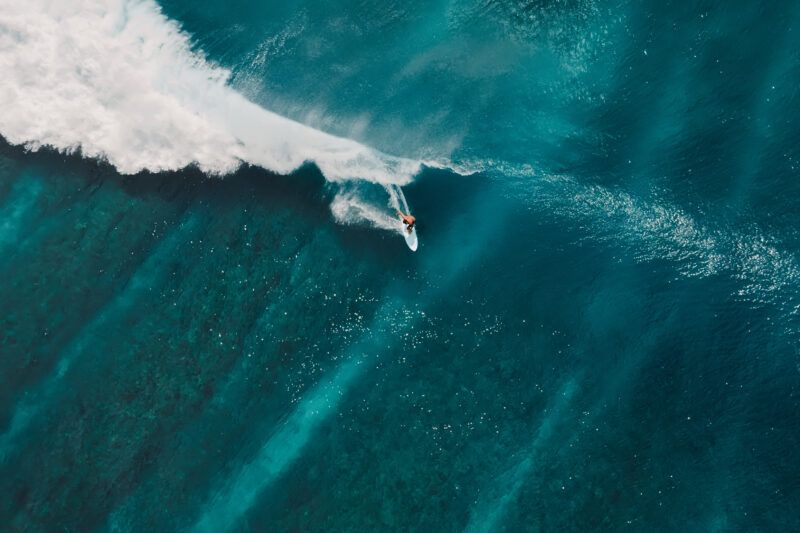
East Bali doesn’t have the surf school density of Kuta or Canggu, but it’s still possible to learn here. Jasri is a great option for beginners thanks to its mellow rights and forgiving setup. Both Jasri and Playgrounds on Nusa Lembongan are classic beach breaks, making them ideal for novice surfers due to their gentle, sandy-bottomed waves. Novice surfers will benefit from these accessible spots, and hiring a surf guide can help maximize progress and ensure safety while learning. Playgrounds also features consistent, easy waves and surf schools offering packages.
Surf camps at Keramas provide packages and accommodations for all levels, but the main wave is best suited for those with some experience, as it is more challenging. Lessons cost AU$30–50 per session, and board rentals are AU$10–20 per day.
Safety and Etiquette
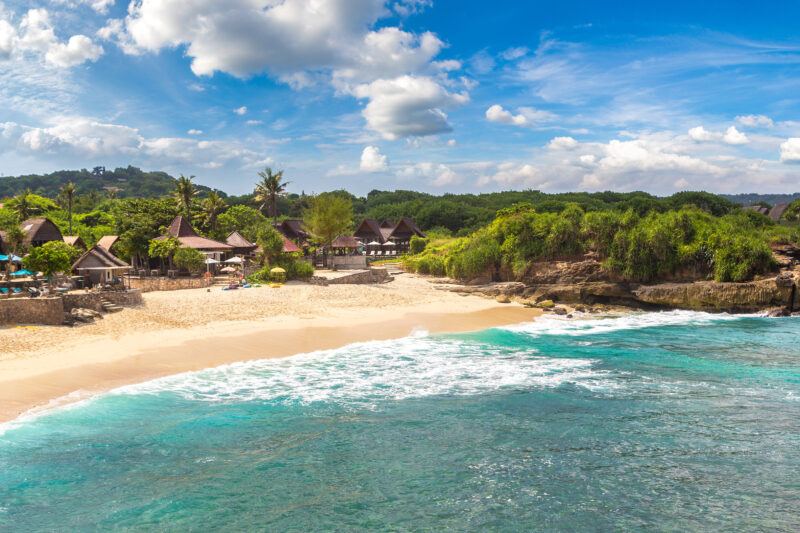
Surf and Yoga Retreats
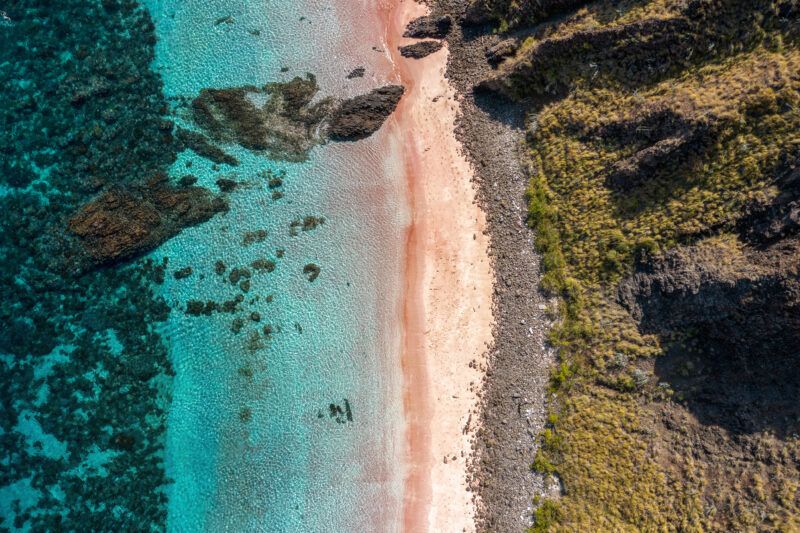
Accommodation Options for Surfers
- Keramas: Surf resorts and villas from AU$80–250+ per night
- Jasri: Guesthouses from AU$40–80, eco-lodges from AU$100–150
- Padang Bai: Budget hotels AU$30–60, mid-range AU$80–120
- Candidasa: Villas and boutique hotels AU$100–200+
- Nusa Lembongan: Beach bungalows AU$50–120, surf lodges AU$100–180
Comparison to Other Surf Destinations
East Bali is far mellower than the west. While the east coast of Bali may not have the most famous waves or famous surf spots like Uluwatu or Padang Padang, it is an essential part of the Bali surf experience. It lacks the consistency and heavy power of those iconic breaks but makes up for it with cultural depth, relaxed lineups, and stunning scenery. Compared to Lombok or Sumbawa, East Bali is easier for intermediates and longboarders. It shares similarities with Sri Lanka’s east coast, offering a mix of soft reef waves, vibrant culture, and uncrowded lineups. For surfers who want more than just barrels, surfing Bali’s east coast offers a unique alternative to the more crowded and well-known areas, making it a must for those seeking a different side of Bali surf.
Expenses
- Accommodation: AU$30–250+ depending on area
- Food: AU$3–10 for warung meals, AU$20–40 at mid-range restaurants
- Transport: Scooters AU$10–15/day, drivers AU$50–80/day, boats to Nusa AU$40 return
- Surf Costs: Rentals AU$10–20/day, lessons AU$30–50/session
East Bali is more affordable than west coast hotspots like Seminyak, Uluwatu, or Canggu but pricier than Indonesia’s remote islands.
Cultural Notes
East Bali is deeply traditional, with temples, ceremonies, and offerings forming part of daily life. Respecting local customs is essential. Cover shoulders and knees when visiting villages and temples, and never step on offerings placed on the ground. Communities here are welcoming but more reserved than Bali’s tourist hubs, so patience and cultural respect will make your trip smoother and more rewarding.
Cell Coverage and Wi-Fi
Coverage is reliable in towns like Keramas, Jasri, and Padang Bai but weaker in rural villages. Wi-Fi is widely available in hotels and cafés but is generally slower than Canggu or Seminyak. On Nusa Lembongan, coverage is decent but subject to occasional outages during storms.
Final Thoughts
East Bali is a place for surfers who want to slow down, connect with culture, and enjoy a more soulful side of Bali. Keramas provides world-class waves for pros, Jasri keeps longboarders happy, Padang Bai and Candidasa offer quiet exploration, and the Nusa Islands deliver postcard-perfect surf in crystal waters. Add yoga, temple visits, hiking, and local food, and East Bali becomes more than just a surf trip—it’s a cultural adventure.
If you’re chasing endless barrels and global crowds, the west coast is where you’ll go. But if you want balance, peace, and uncrowded waves with a strong sense of place, East Bali is the surf destination that delivers all of it.


